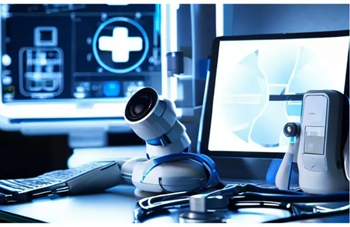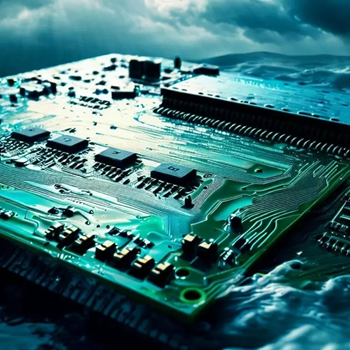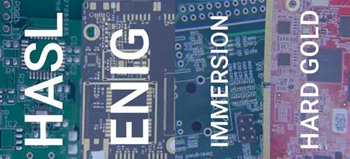The Role of PCBs in Digital Health Solutions: Telemedicine and Remote Patient Monitoring
Without PCBs, the healthcare industry would look very different today. Specifically, telemedicine and remote patient monitoring provide thorough, personalised, convenient and accessible treatment to millions of patients who otherwise might struggle to receive the care they need. Healthcare is a rapidly changing industry, and PCBs allow technology to keep up with constant developments. In this post, we’re going to explore the role PCBs play in digital health solutions, including telemedicine technology and remote patient monitoring and what might be in store for the future of the industry. The emergence of digital health solutions Since early 2020 and with the Coronavirus pandemic grinding many industries to a halt, it quickly became apparent that digital health solutions would ensure many people could continue to receive medical treatment during a period when people were kept apart. While it has been in development for many years, Coronavirus accelerated the rise of digital health. During those initial months as the virus spread across the globe and medical professionals struggled to understand it, patients could receive treatment diagnoses, and be provided with prescriptions without so much as leaving their homes. The speed at which it has happened is recognised across the healthcare industry. An article from BMC Digital Health states that ‘advances in artificial intelligence, machine learning and deep learning have since led to the development of tools that can generate, store and interpret reams of medically related data, create models of biological systems that stimulate disease and the birth of precision medicine’. While the pandemic normalised digital healthcare, the aforementioned speed is what makes it difficult to monitor. Dr David Novillo-Oritz, regional advisor on data and digital health at WHO/Europe, says ‘Progress is needed in developing and collecting comparable data and a common set of indicators, as well as sharing information and knowledge for measuring national digital health maturity levels.’ However, digital health solutions aren’t intended to replace the knowledge and expertise of healthcare professionals and the two need to work together to ensure great care. The National Library of Medicine published a paper that claimed, ‘the nurse is increasingly becoming a key figure for the implementation of telemedicine in clinical practice’. PCBs are a foundational component of the technology that’s driving the industry’s growing reliance on digital solutions, ensuring data exchange, integrating electronic components and allowing for seamless connectivity to improve all types of healthcare. Telemedicine and remote patient monitoring Two of the biggest contributors to the rise in digital health solutions are telemedicine and remote patient monitoring. But what exactly are they and why are they transforming healthcare? Telemedicine Telemedicine is the use of technology to provide medical advice, diagnoses and treatment remotely. It provides healthcare professionals with the opportunity to speak with patients without having to meet in person. Not only does this allow a doctor or nurse to help a greater number of patients, but it helps with accessibility, costs and allows patients to receive care much faster. Remote patient monitoring Remote patient monitoring is the collection, processing and transmission of patient data that allows healthcare professionals to monitor and manage patients, their progress and their treatment without the patient having to leave their home. It’s a fast and convenient way for the patient to receive proactive and expert care. It also encourages patients to take an active role in managing their own health. Both telemedicine and remote patient monitoring are transforming healthcare by shifting it from reactive to proactive. Care can be given continuously, and as patients’ needs change so too can the treatment they receive, which is focused on data that professionals receive in real-time. Care can be given quickly and accurately, and is highly personalised and flexible, only using the resources that are relevant to each patient. PCBs: the backbone of digital health solutions Without PCBs, these advancements in digital health solutions wouldn’t be possible and PCB software is playing a crucial role in streamlining healthcare across the world. Below are three more ways PCBs are helping healthcare professionals deliver faster, more accurate and more personalised care. 1. Medical imaging devices – PCBs can be found in almost every medical imaging device doctors and nurses use to diagnose injuries and illnesses. This includes MRI, CT scanners and ultrasounds. For example, in ultrasounds, PCBs coordinate and control the transmission and reception of signals, which enables accurate image generation. 2. Wearable devices – PCBs can be manufactured to fit inside the smallest pieces of tech, including wearable devices that track and monitor health. For example, heart rate monitors, blood sugar monitors and pulse oximeters. This information can be sent in real-time to healthcare providers who can make adjustments to treatments if necessary. 3. Electronic record keeping – PCB-based computers are used to store, organise, and access patient records. This allows patients to be seen by any healthcare professional who can instantly access those records. The future of PCBs in digital health solutions In just the last few years, digital health solutions have transformed how patients receive healthcare. Now, as 93% of physicians believe digital health tools are an advantage for patient care, more and more advancements in the relevant technology and processes will continue to improve how digital care is delivered. PCBs are set to be at the forefront of a promising future. This includes: • AI integrations may be able to process data instantly to advise patients on the state of their health and recommend changes to their treatment. • Implantable devices, similar to a pacemaker, but with the ability to treat a wider range of complex conditions. • Further miniaturisations and a wider range of wearable healthcare devices. • Flexible and stretchable PCBs that allow for a wider range of wearable devices, such as the introduction of smart fabrics. • Advanced sensing to provide more accurate and comprehensive data in real-time. • Wireless connectivity to seamlessly transfer data from one device to another. • Edge computing will help PCBs process data locally which improves security and optimises power consumption. • Biometric data fusion will allow different data sources to provide an overall view of a patient’s health. • Energy harvesting will allow tech to be powered via the environment. Conclusion Designing and manufacturing PCBs for digital health solutions is a process that requires care, experience and diligence. From telemedicine to remote monitoring systems, healthcare electronics manufacturers like us here at ABL Circuits continue to provide affordable, convenient and flexible healthcare solutions to both patients and healthcare professionals.Visit the ABL Circuits Ltd website for more information on The Role of PCBs in Digital Health Solutions: Telemedicine and Remote Patient Monitoring





